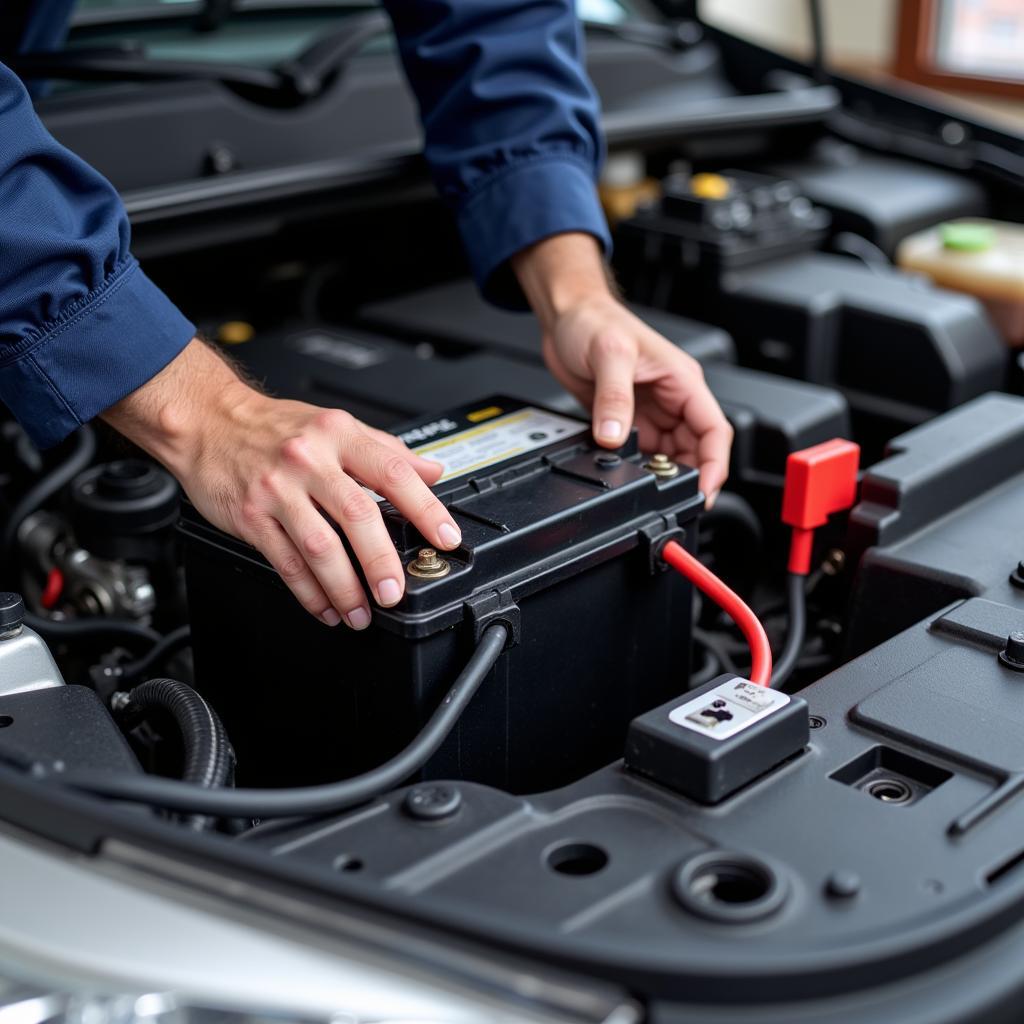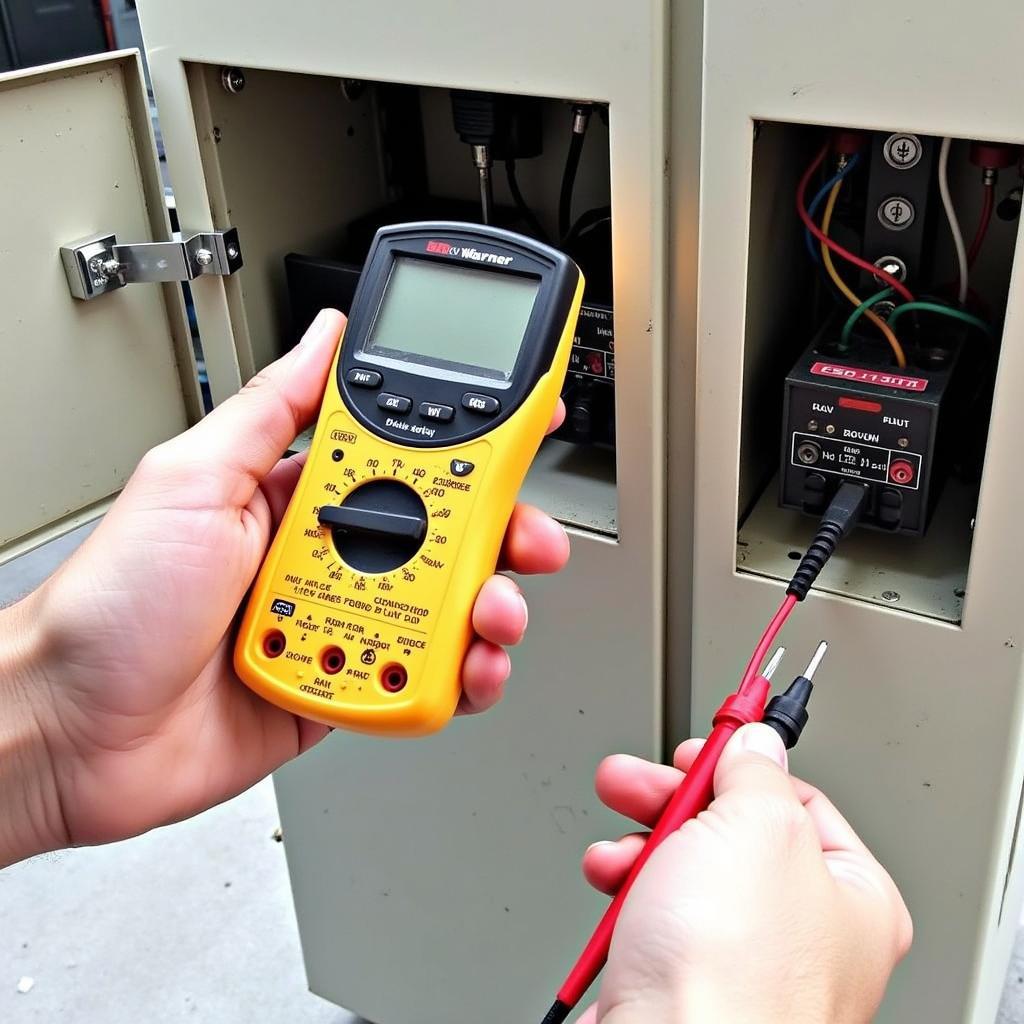A dead car battery is a frustrating experience, leaving you stranded and needing a solution fast. Many people wonder, will a car battery charger actually charge a dead battery, or is a jump start the only option? The answer, as with most things automotive, isn’t a simple yes or no. Let’s dive into the specifics of charging a dead car battery. After the first unsuccessful start attempt, you might want to read up on how to keep your car battery from draining to prevent this from happening again. You can find helpful information in our article about keep car battery from draining.
Understanding the Difference Between “Dead” and “Discharged”
First, it’s important to distinguish between a truly dead battery and one that is simply discharged. A discharged battery has lost some of its charge but can still accept a charge. A truly dead battery, on the other hand, has suffered internal damage and is unlikely to hold a charge even after being connected to a charger. This damage can result from things like sulfation (lead sulfate crystals forming on the battery plates) or physical damage to the battery’s internal components. If your battery is truly dead, it’s time for a replacement. However, if it’s simply discharged, a car battery charger can often revive it.
How a Car Battery Charger Works
A car battery charger works by supplying a controlled current to the battery, reversing the chemical process that occurs during discharge. This process replenishes the battery’s stored energy, allowing it to power the vehicle’s electrical systems. Modern chargers often include features like automatic shutoff and multiple charging modes to prevent overcharging and optimize the charging process for different battery types.
Can a Trickle Charger Charge a Dead Battery?
Trickle chargers supply a very low current over an extended period, ideal for maintaining a battery’s charge or slowly charging a slightly discharged battery. While a trickle charger might eventually charge a deeply discharged battery, it will take significantly longer than a standard charger. If the battery is truly dead, a trickle charger won’t be able to revive it.
What Type of Charger is Best for a Dead Battery?
For a deeply discharged battery, a standard automotive battery charger with a higher amperage output is recommended. These chargers can deliver a faster charge, getting your car back on the road more quickly. Some smart chargers automatically adjust the charging rate based on the battery’s condition, providing an optimal and safe charging process. Choosing the right charger also depends on the type of battery you have (AGM, lead-acid, etc.). Consult your vehicle’s owner’s manual for recommendations.
What to Do If Your Car Battery Won’t Charge
If your car battery refuses to charge, there are several potential issues:
- Faulty charger: Test the charger on another battery to rule this out.
- Corroded terminals: Clean the battery terminals with a wire brush and baking soda solution.
- Bad battery cables: Check for frayed or damaged cables.
- Internal battery damage: If none of the above solutions work, the battery is likely dead and needs replacement. When your car battery simply will not start, especially in colder temperatures, it’s worthwhile to read more about why that might be. You can find additional information in our article on car battery wont start in cold.
Preventing a Dead Battery in the Future
Regular maintenance can help prevent your car battery from dying prematurely. This includes:
- Regularly cleaning the battery terminals.
- Having the battery tested periodically.
- Limiting short trips, which can prevent the battery from fully recharging.
- Turning off all lights and accessories when the car is parked. If you are experiencing problems with your car battery not starting, especially during the cold season, we have a detailed guide you can check out: car battery not starting in cold weather.
Conclusion
While a car battery charger can often revive a deeply discharged battery, it won’t work on a truly dead battery. Understanding the difference, using the right type of charger, and performing regular maintenance can help keep your battery healthy and prevent frustrating breakdowns. If your battery is beyond saving, understanding the implications of a dead battery sitting idle is crucial. You can find valuable insights in our article addressing this issue: is it bad for a car battery to sit dead.
 Installing a New Car Battery
Installing a New Car Battery
FAQ
- How long does it take to charge a dead car battery? Charging times vary depending on the battery’s size, condition, and the charger’s output. It can take anywhere from a few hours to overnight.
- Can I jump start a car with a dead battery? Yes, jump-starting can often get a discharged battery going enough to start the engine. However, the battery may still need charging afterward. Sometimes even seemingly simple tasks like changing the battery in your key fob can cause unexpected issues. Check out our guide on how to change battery in a dodge key fob for a step-by-step explanation.
- How can I tell if my car battery is dead? Signs include dim headlights, slow cranking, clicking sounds when turning the key, and electrical malfunctions.
- How long do car batteries typically last? Car batteries typically last between three and five years.
- Can I leave a car battery charger on overnight? Some chargers are designed for overnight charging, while others are not. Always consult the charger’s instructions.
- What should I do if my car battery keeps dying? Repeated battery failure may indicate a problem with the car’s charging system or a parasitic drain. Have a mechanic inspect your vehicle.
- Is it safe to charge a car battery indoors? Charging a car battery indoors is generally safe as long as the area is well-ventilated to prevent the buildup of hydrogen gas, which is flammable.

